I crossed the old wooden bridge over the canal on County Road 17 and continued on. The dirt road makes an almost ninety degree turn just up ahead before winding back to the left, then right, ending in a small, open area. A sign lets you know you all the people and organizations who have made this area possible. The Cedar Canyon Wildlife Management Area parking area is uneven and rocky. It’s just a dead end, but only for a vehicle.
I pull up next to an old pickup truck, the only other vehicle here, shift into neutral, yank on the parking break and gather my belongings for a morning hike. The cool air hits my face as soon as I open the car door and is at once cold and refreshing.
I spot a sign that says hunting is allowed here. Not wanting to be shot, I reach back into the car and grab my yellow safety vest I wear when called to the scene of an accident. I can’t put it on because my camera backpack will block most of the reflective vest, so I zip my backpack into the vest. I hope it is enough for a hunter to know I am a human and not a bighorn sheep.
With that worry aside, I remove my Canon 70D and Nikon D7000 from my camera bag and rest them on the hood of my car. The now lightened camera bag is easily slid over both shoulders. The Nikon, with a 300mm lens, is hung off my right shoulder. The Canon hangs loosely in my left hand, ready for any sudden action.
Ants scurry in near perfect lines between several nests. They are in search for food to bring back to their queen. I walk by, mindful to not step on a single one.
The rocky bluffs of the Cedar Canyon Wildlife Management Area and several other nearby locations provide a great opportunity to see bighorn sheep. Though I am too late to see any today, they can be best viewed in winter when rams and ewes gather together for the breeding season.
The Audubon race of bighorn sheep was once native to the Great Plains of Nebraska and the nearby Wildcat Hills. They were driven from Nebraska in the late 1890s and have been extinct since the early 20th century. Invasion of their habitat by cattle and domestic sheep, disease spread by domestic livestock, and unregulated hunted all played a part in their extinction.
After mountain sheep were reintroduced in the traditional bighorn range in South Dakota and at Fort Robinson, the Nebraska Game and Parks Commission reintroduced Rocky Mountain bighorns from Colorado to the Cedar Canyon Wildlife Management Area in March 2001 with a herd of 22 animals – twelve ewes, six lambs and four rams.
The area provides steep, rocky terrain that bighorns use for escape and for lambing. The herd is much larger now and, if you come at the right time of day and know where to look, you can see the bighorns that roam free in Nebraska.
With no bighorns in sight on this day, I turn my attention to wandering. The sun begins to rise over the bluff, casting a golden glow upon the land. The reds, greens, and tans lighten just a bit as the sun’s rays kiss them on this cool morning. Cows in a distant field busy themselves with a bountiful breakfast, caring not that a single other living soul is around.
This is not a day of disappointment. It is what you make of it and the sounds of crickets tell your ears there is life all around you.
Butterflies are as abundantly seen as the crickets are heard. They flutter everywhere, up and down, resting on the branches of a variety of plants. The plants are host to the myriad life most people do not see as they look for bigger things than bighorn sheep.
On a single plant, I count five different kinds of life – moths, grasshoppers, monarch butterflies, yellow butterflies, and what look like milkweed bugs. The bug’s body is covered in pollen. It looks more sinister with the pollen covering up its slick, black face that appears to be as smooth as oil.
Another grasshopper, just one of dozens seen this day, moves swiftly along a thick, round piece of grass. The grasses here lend themselves as great camouflage for the grasshopper who, if it remains still, blends in so perfectly, predators will simply pass it by.
I continue hiking along the uneven trail, stopping to smell the crisp September air. I watch the insects as they go about their day. They have a need to work each day in order to survive. I am taking the time to step away from work, from life, from the burdens of the day-to-day, to see and smell and taste all that is offered up to me here.
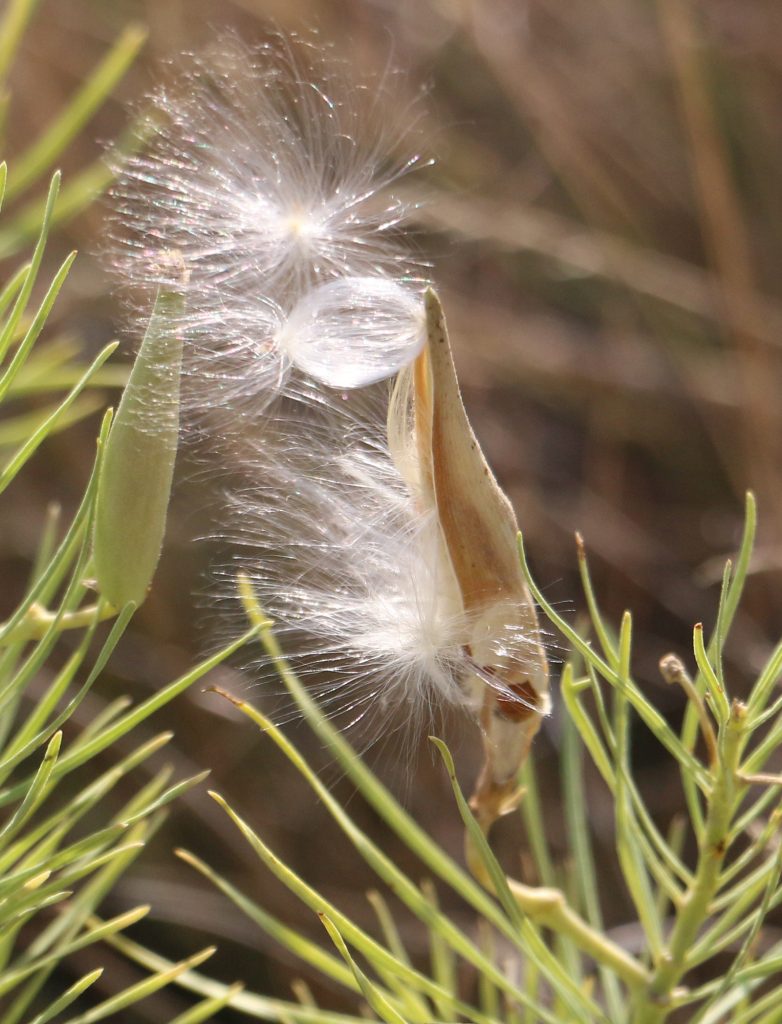
Though plants are alive in a different sense than mammals and insects, they, too, are subject to the wind. The light breeze that cooled me from the hot sun also sway the plants to and fro, allowing their seeds to be released for life elsewhere in the Cedar Canyon Wildlife Management Area.
As I walk along one trail that dead ends, I think about climbing up one of the rocky buttes. The favored trail of the bighorn sheep is clearly visible, but I am unsure if I can make it. I turn around and begin my hike back toward a cutoff. Once there, I stop to admire a cactus. Near to the ground, it would not be a good thing to sit on. The angle of its growth causes obstacles to a good picture. It is here where I look up and think, “I can climb that.”
I put my cameras away in my bag and begin to climb the cliff. Two-thirds of the way up is the best I can do. I am not a bighorn sheep. I do not have the right equipment. I hold onto a small, rocky outcrop, just big enough for a human hand and turn to look at the wonder of the land. From here, the awe and wonder of the enormity of the task American Indians faced in this part of the world come crashing in, taking my breath away. I wondered how many of them thought they could climb this cliff, too. I smiled, knowing I was probably in good company – those of us foolish enough to try the ascent.
I hang in place for fifteen minutes before I noticed a pickup truck in the distance, the trail of dust kicked up from the movement of the tires left a discernible trail behind. It was on a road I had passed coming in to the Cedar Canyon Wildlife Management Area. “No vehicles beyond this point.” I surmised the truck must belong to Game and Parks. I also assumed I should probably not be up this high. I don’t honestly know if I should stick to the trails or not.
I begin the slow trudge back to solid ground, walking through a dried creek with old, dusty hoof prints. I reach the road just as the Game and Parks truck approaches me. The man inside waves and continues on. I almost wish I had stayed up on that cliff.
As I walk along this new trail, a butterfly distracts me. It glides effortlessly low to the ground, sailing just above the short grass. From time to time it stops to rest on a blade of grass before launching off again.
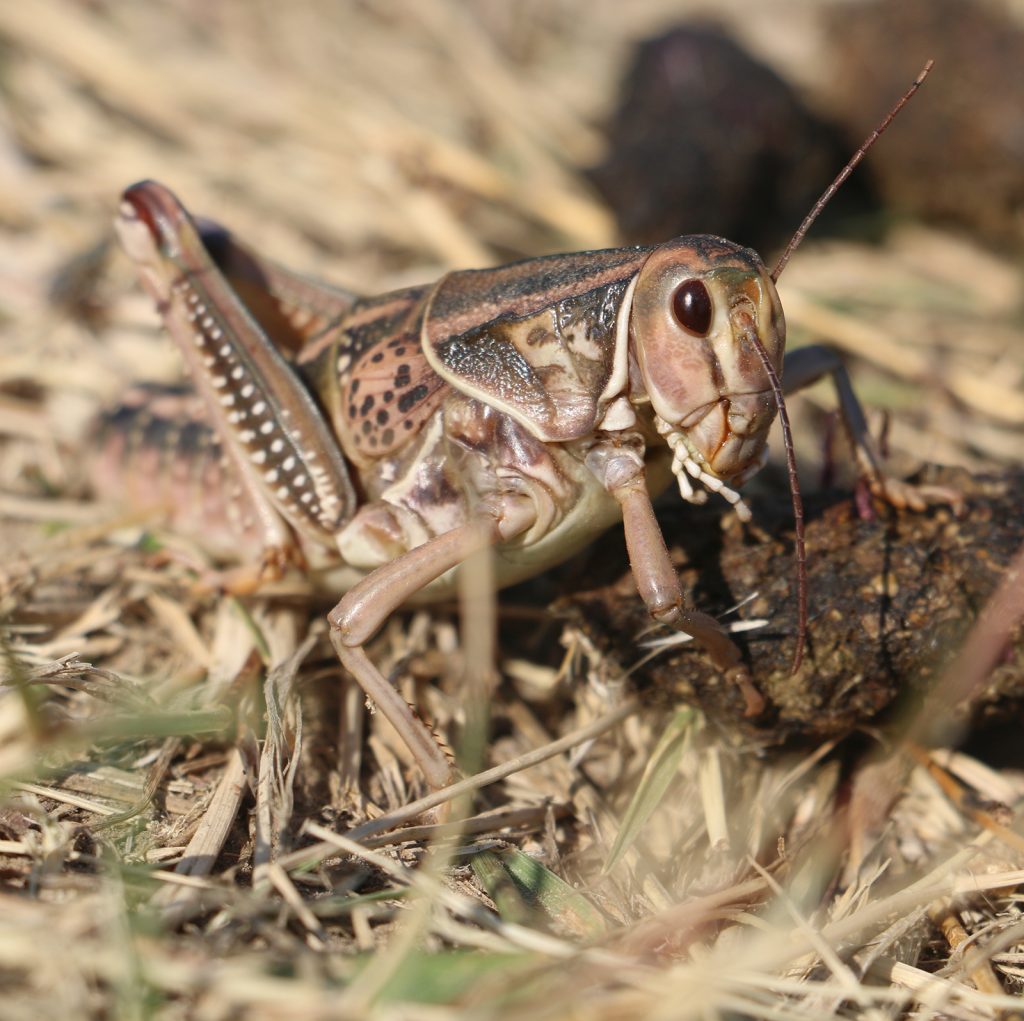
It’s a grasshopper hanging out on some shit, silly. I stared at this grasshopper for a long time. It stared back. At some point, I felt like it was trying to kill me with its mind. It never flinched, no matter how close I got to it.
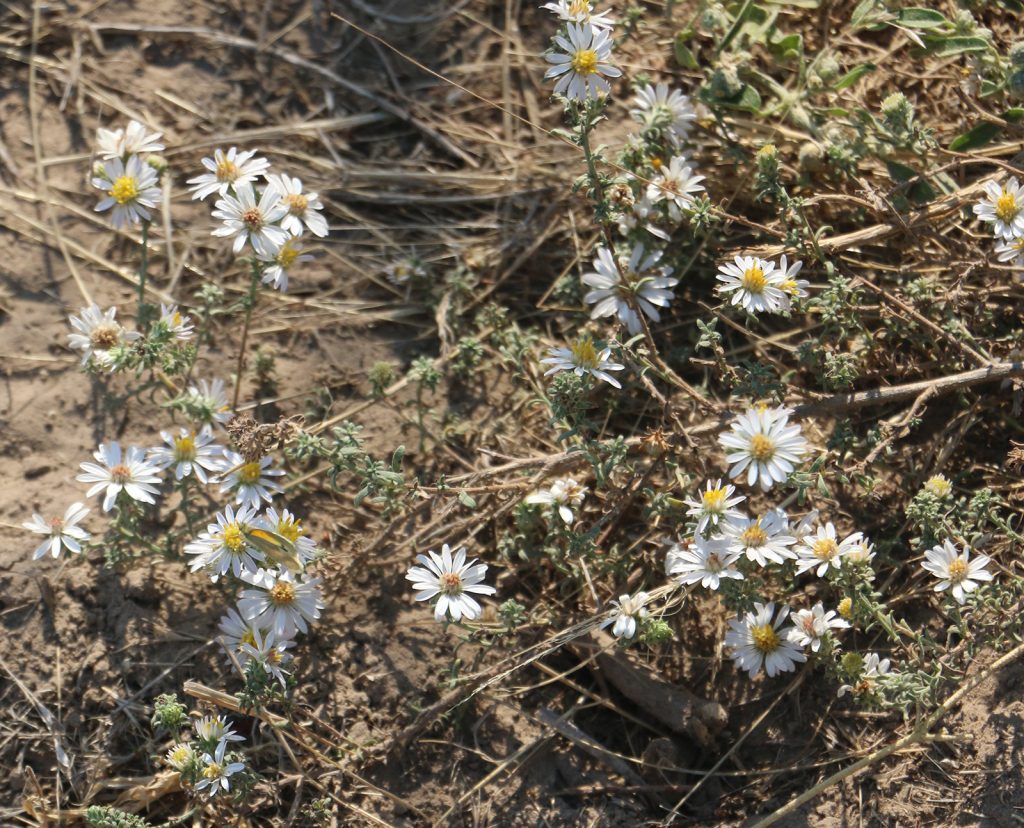
Do you see it? Most people don’t. Would you have seen it as you were walking along the trail, humming, enjoying your day out yonder? I did. And I took several pictures.
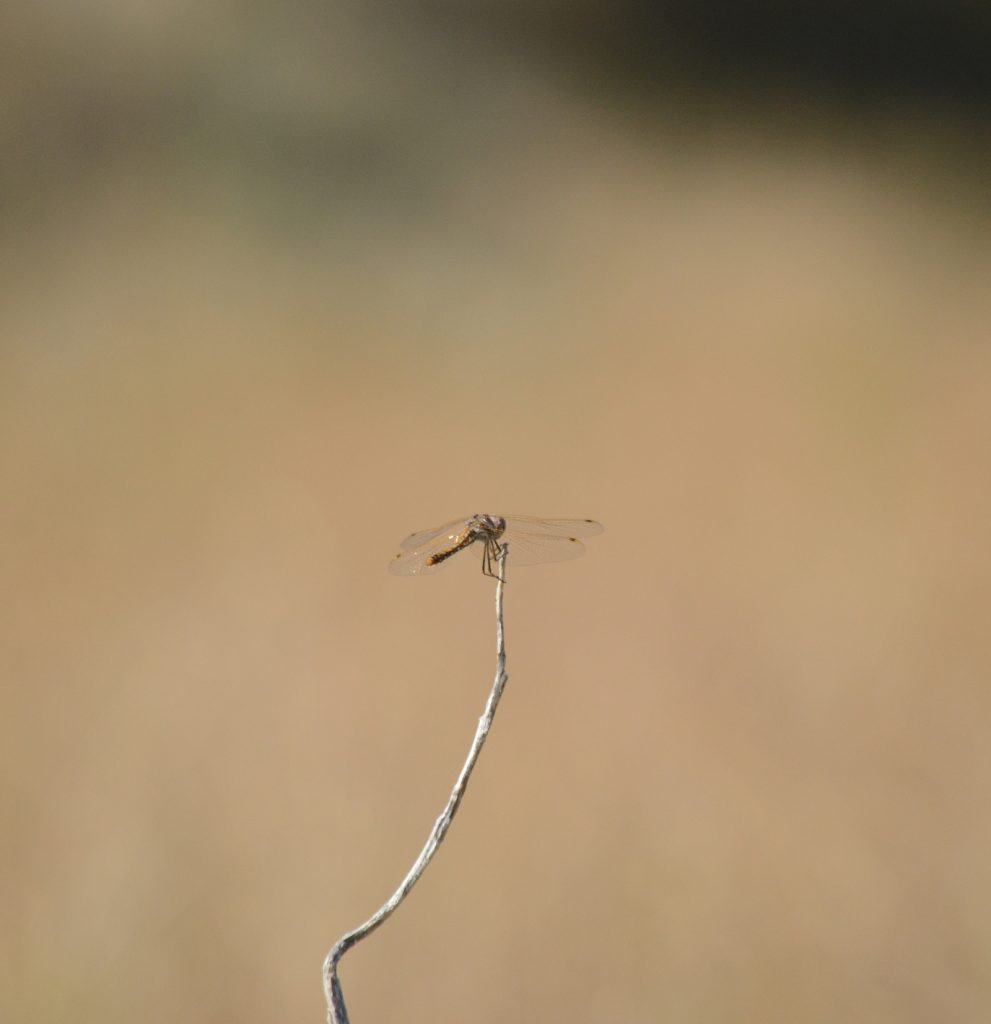
The dragonflies are here too, with their golden edges glistening in the sun. They rest for a moment before returning to flight.
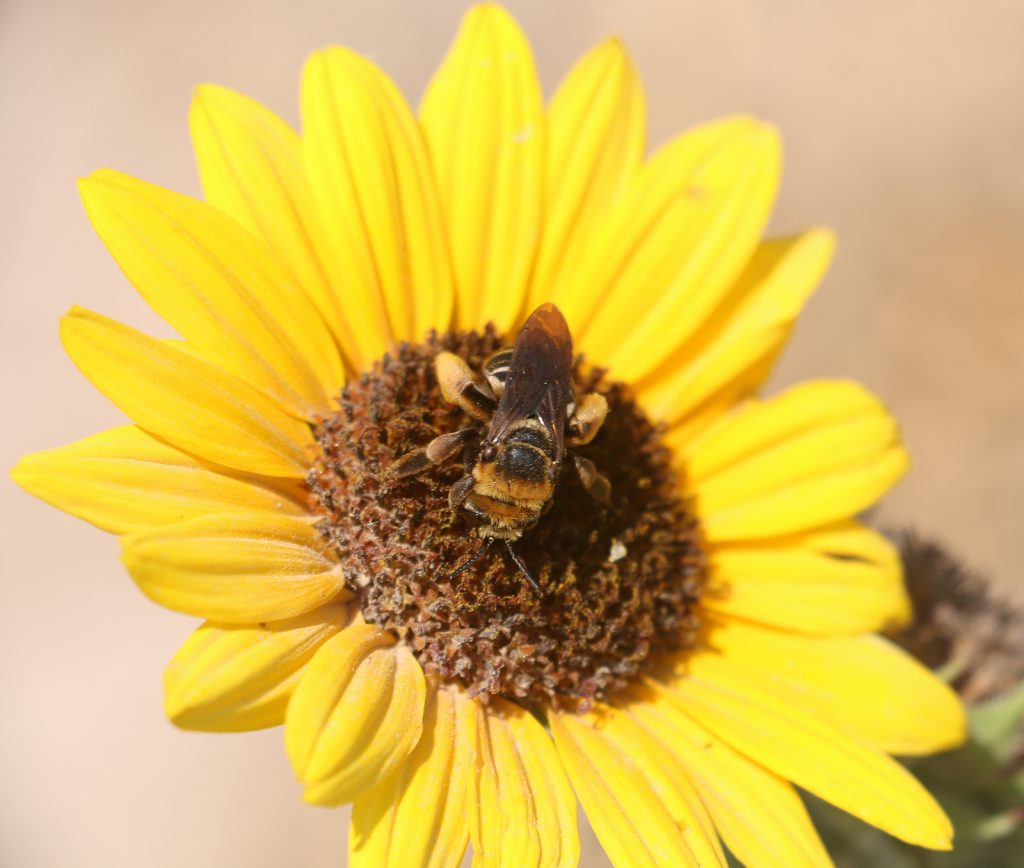
As I leave the Cedar Canyon Wildlife Management Area, I see a bee heading toward an outcropping of sunflowers. I stop to have a look.
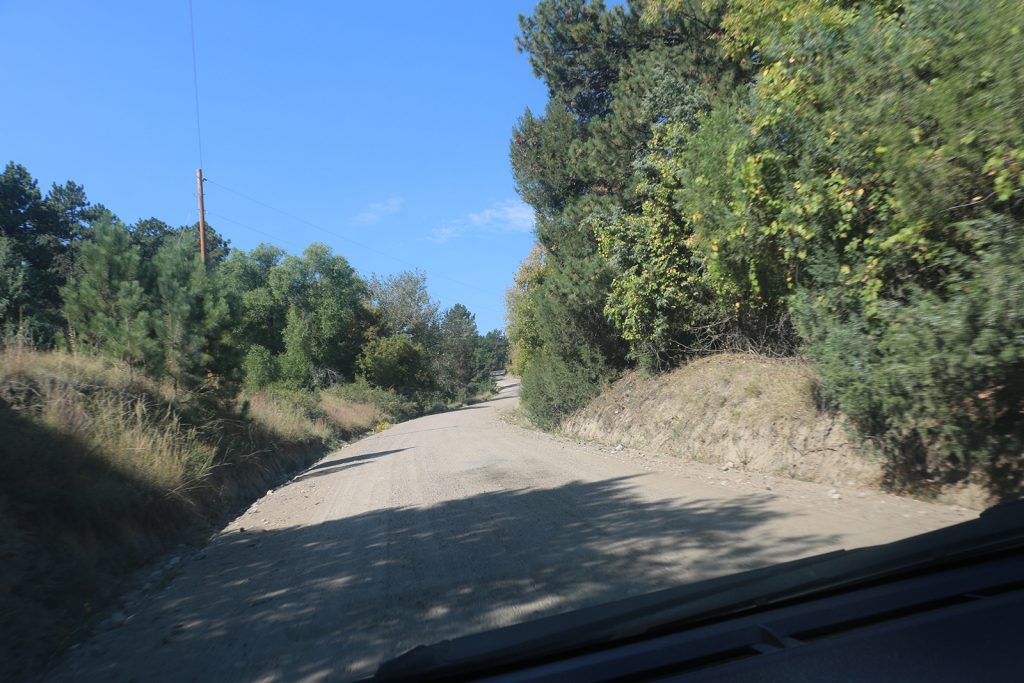
Although my time at the Cedar Canyon Wildlife Management Area was over as the heat of the sun began to mercilessly beat down on me, I took another back road through more scenery before returning to the world.


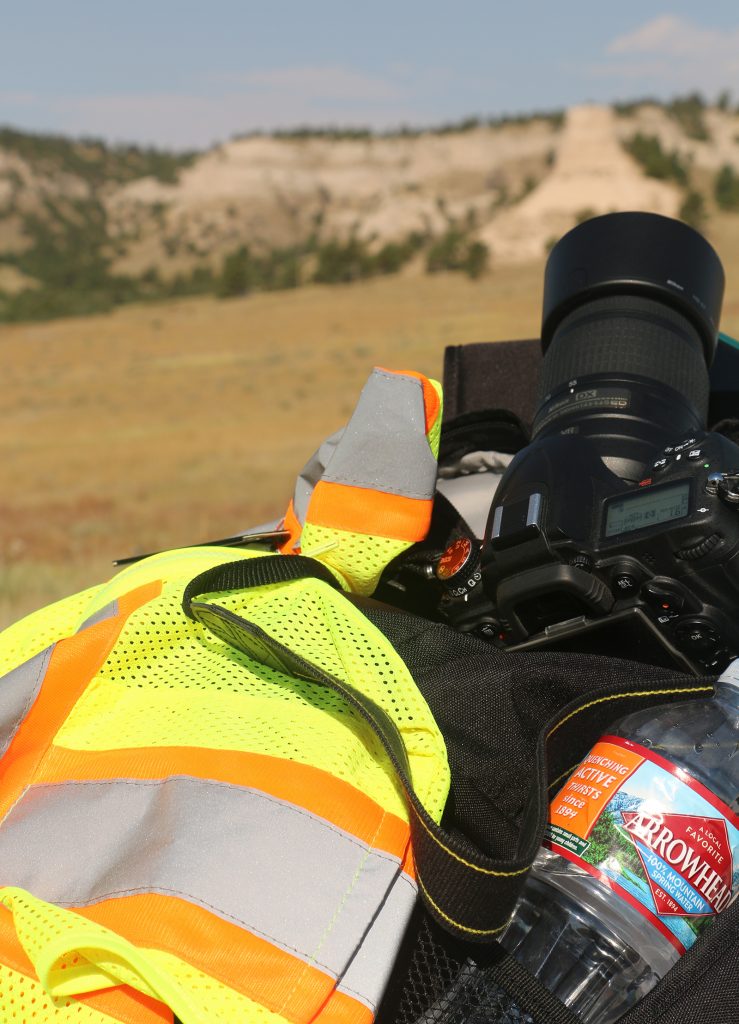
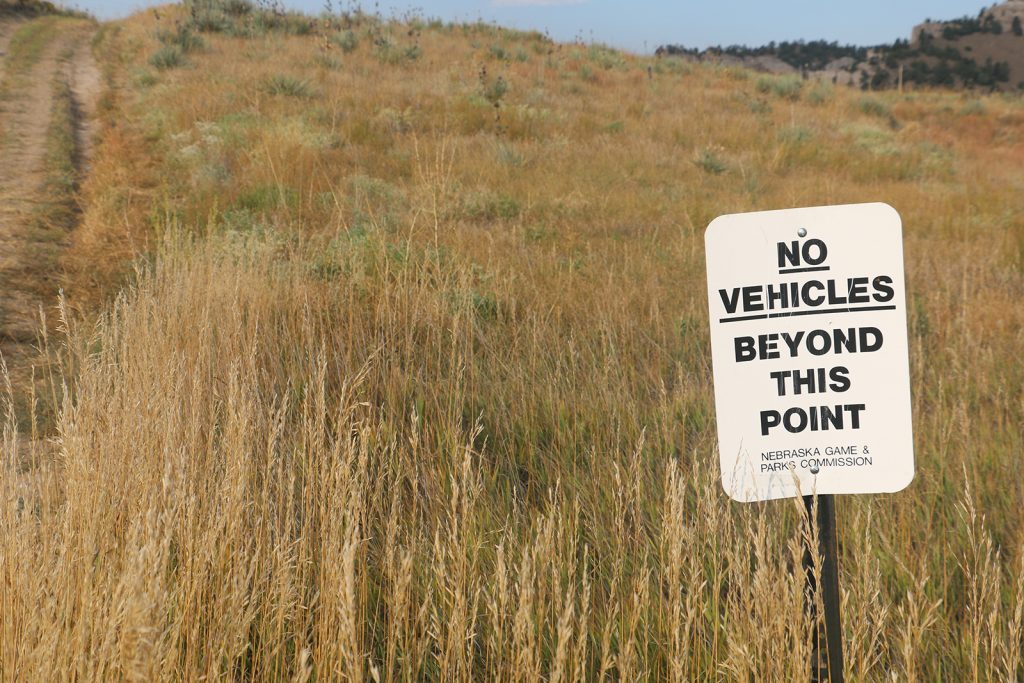
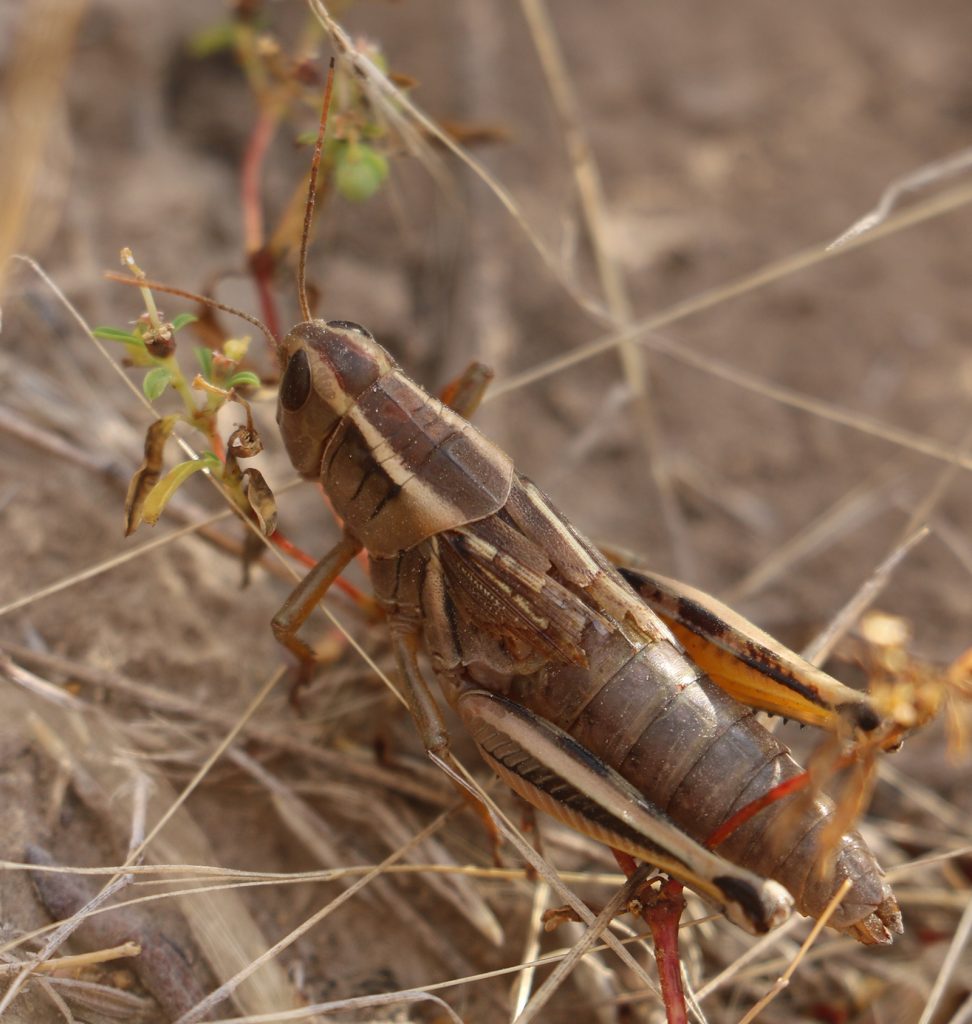
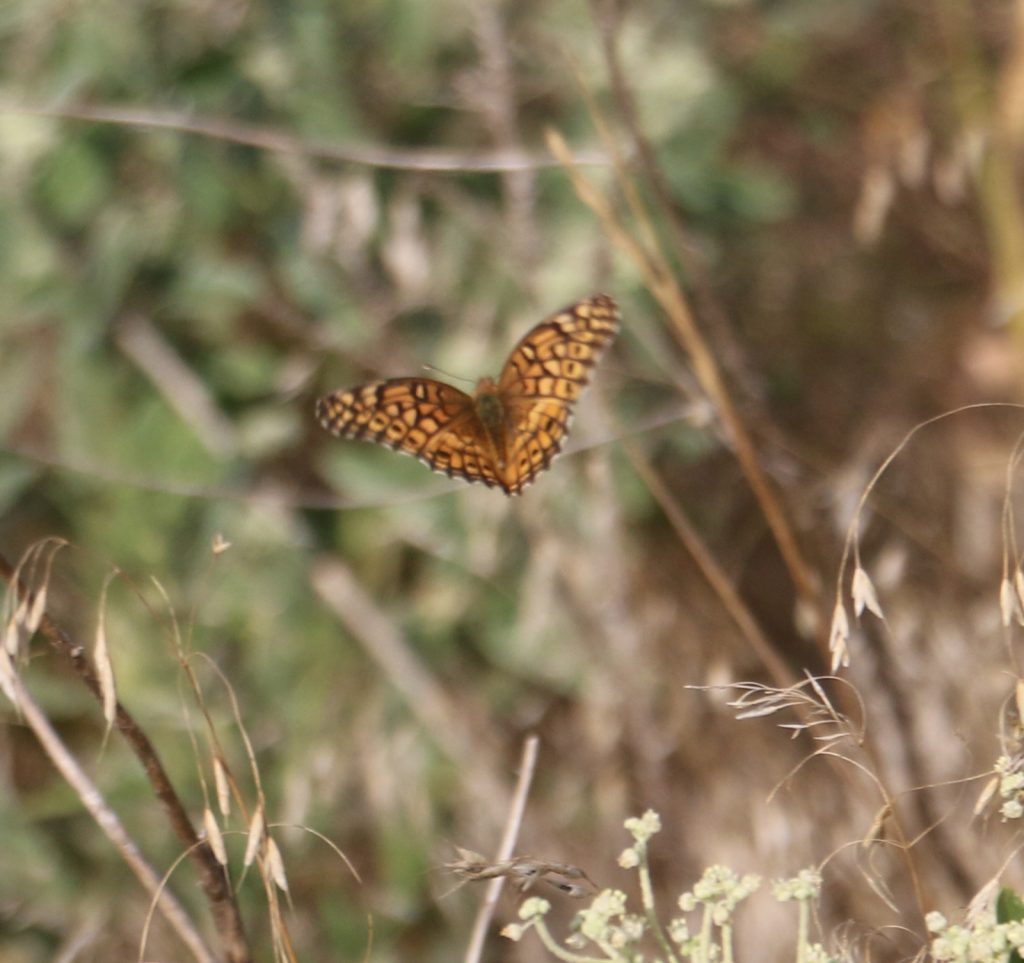
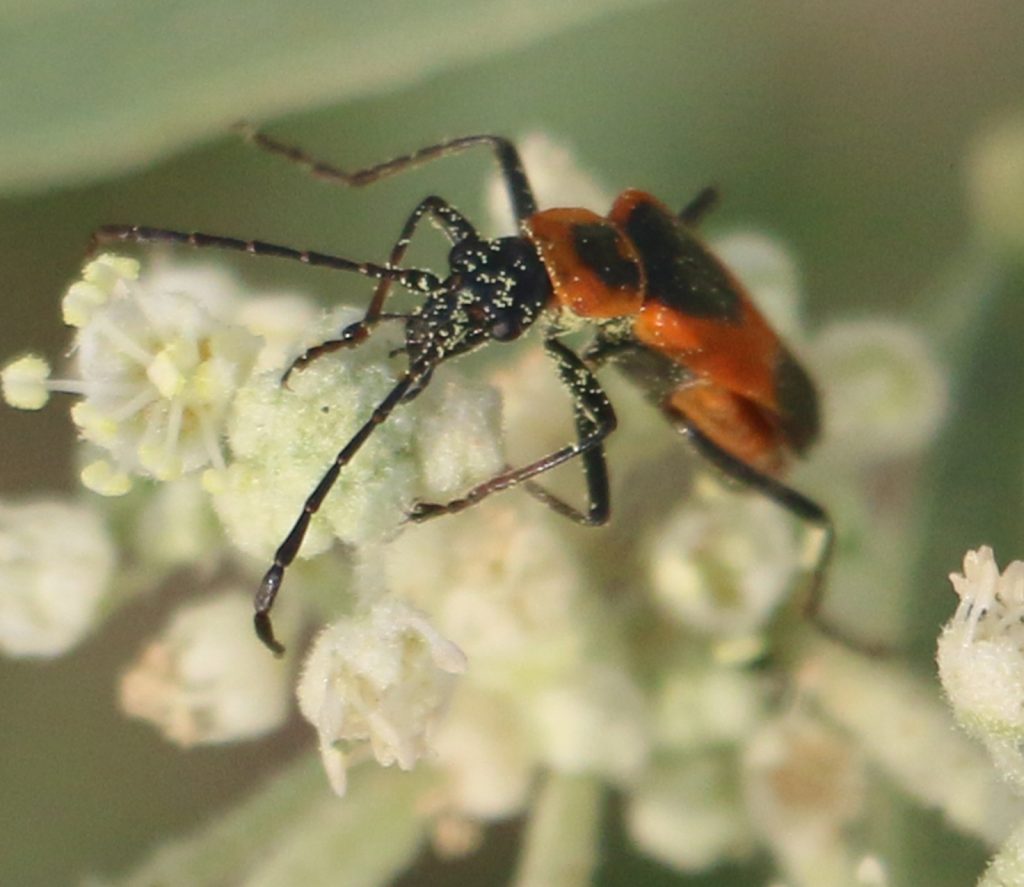
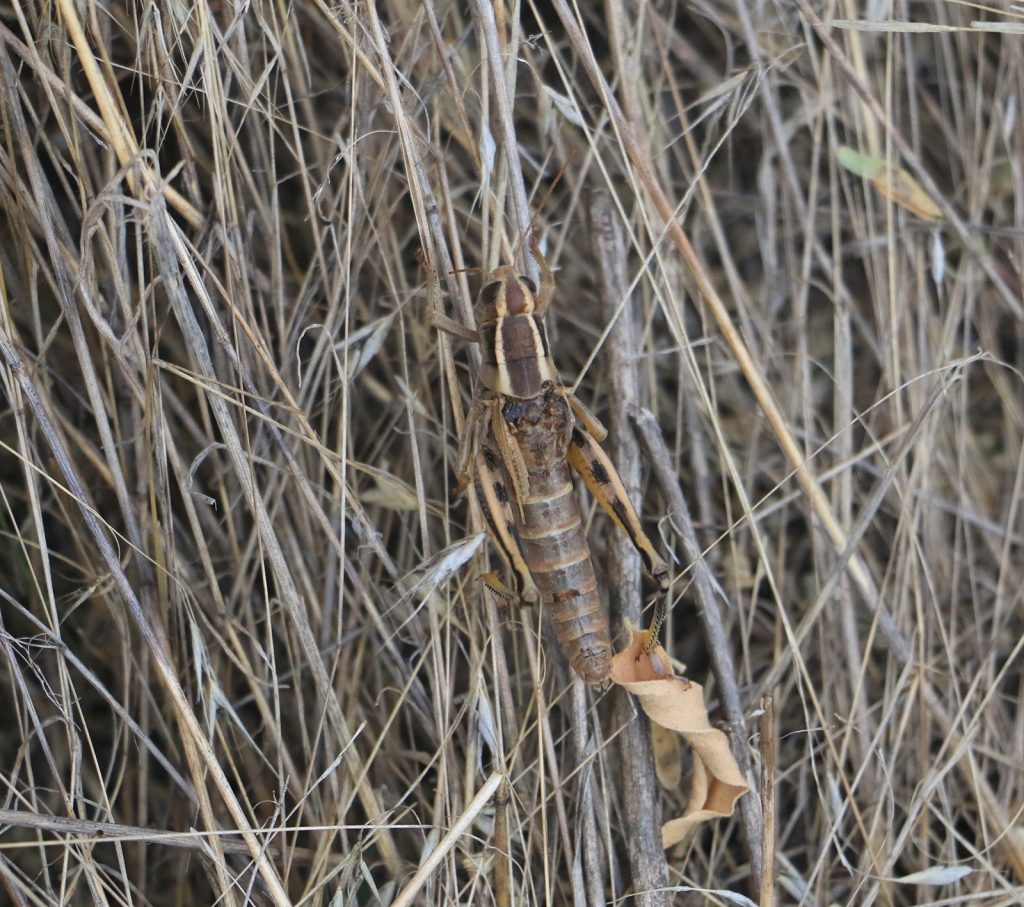
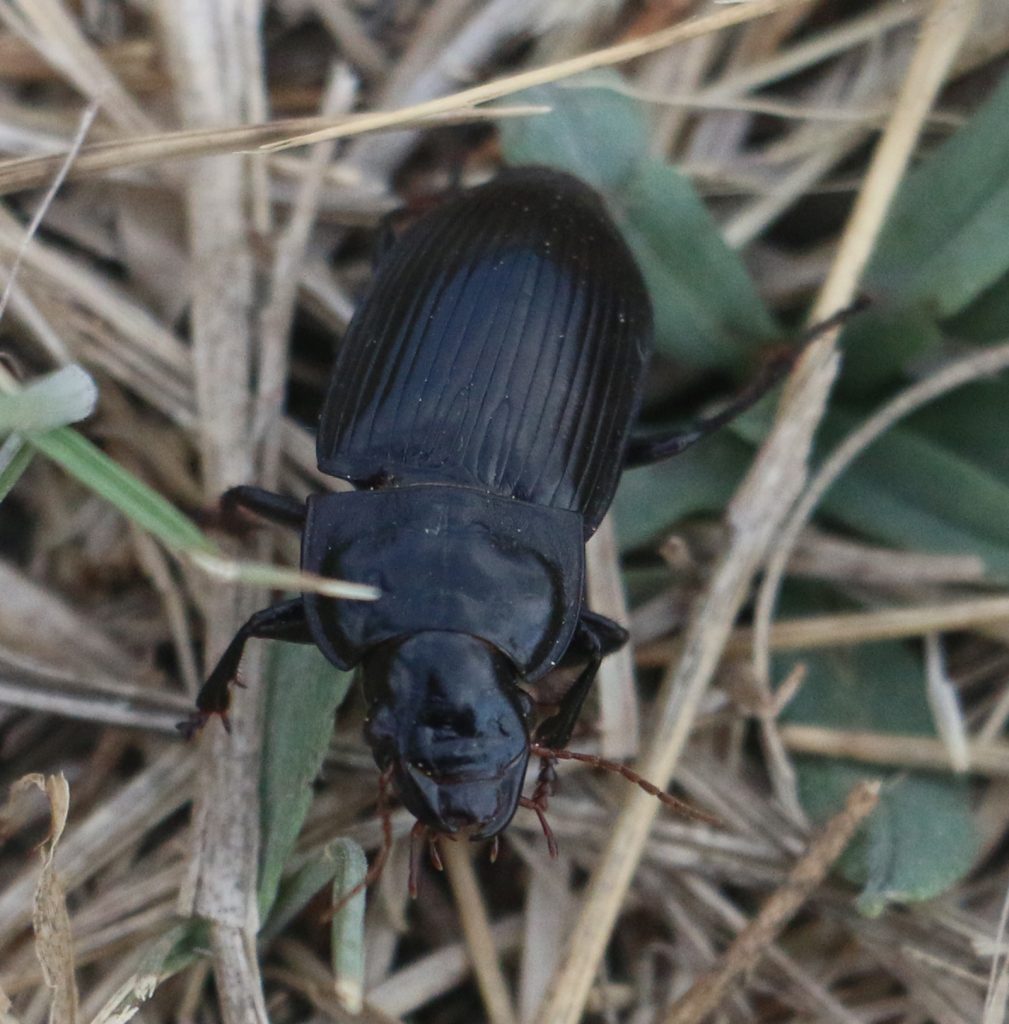
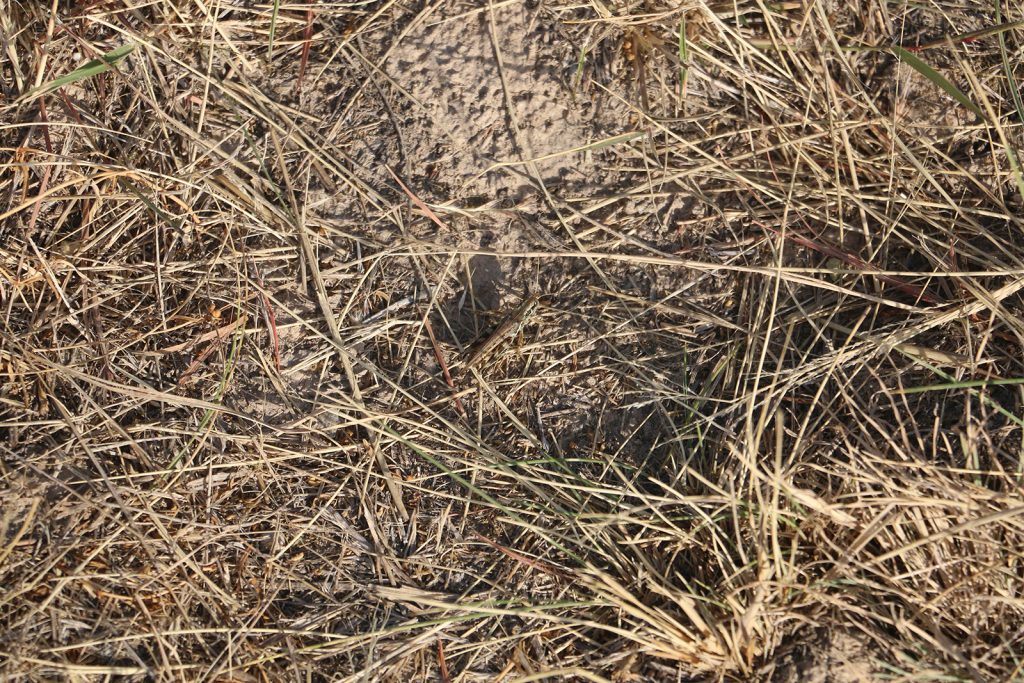
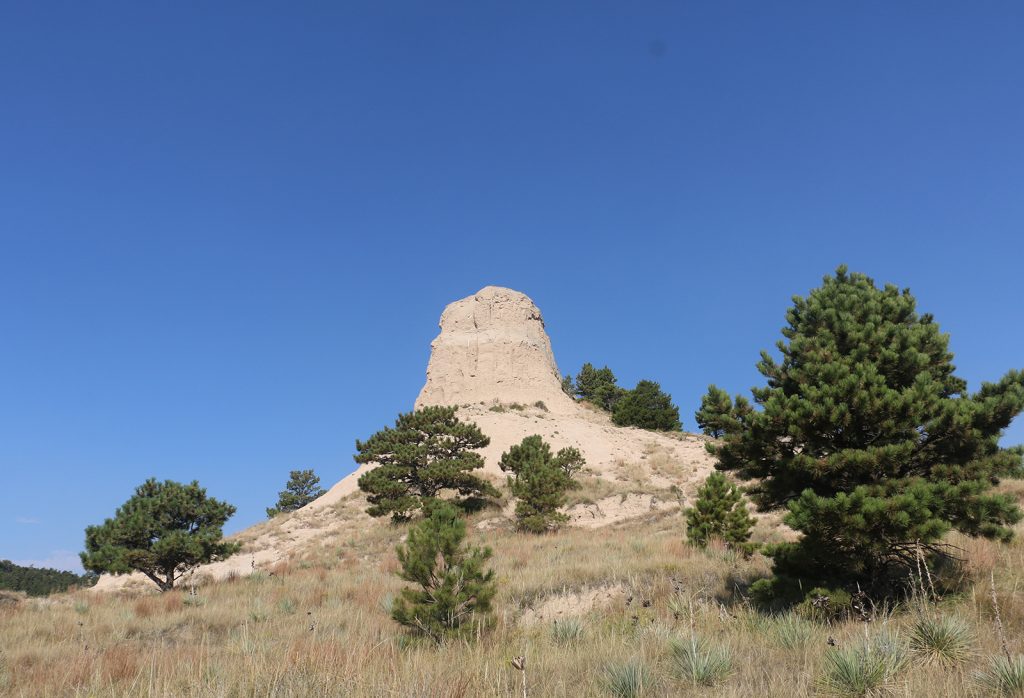
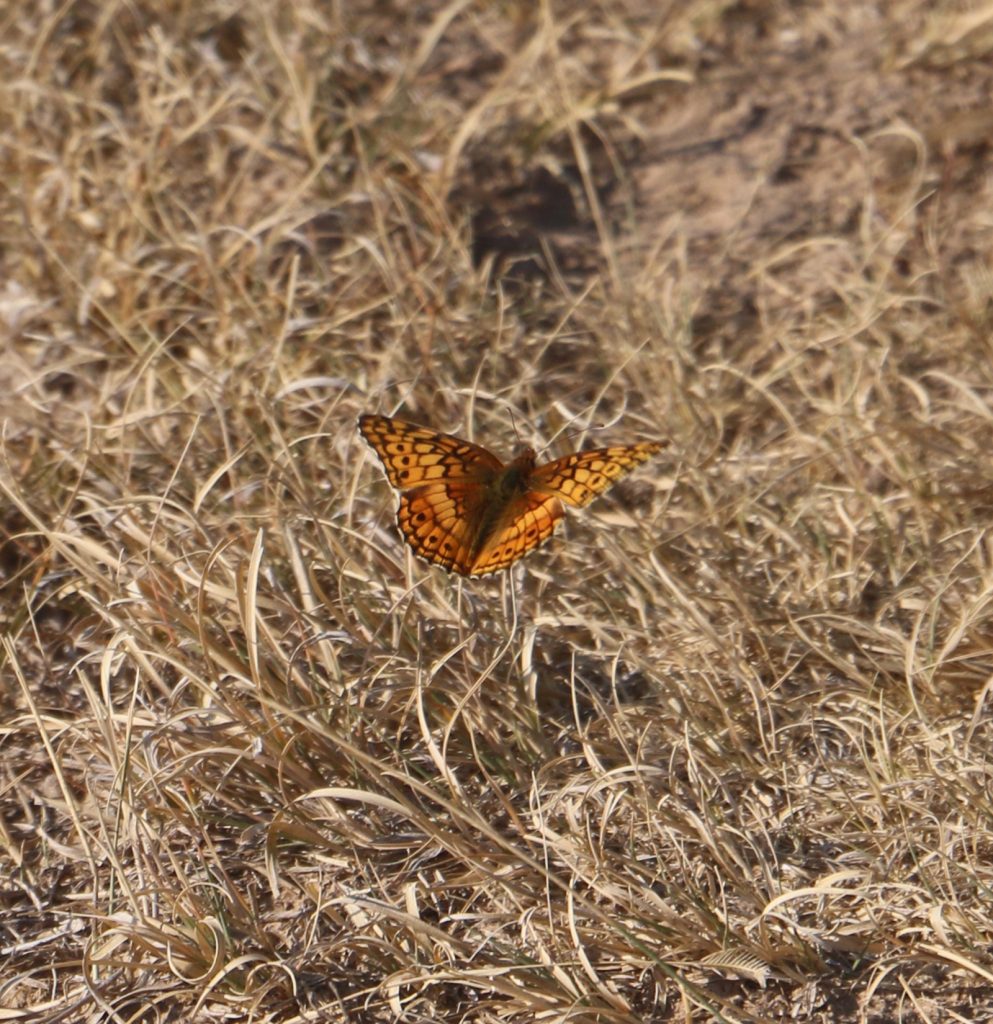
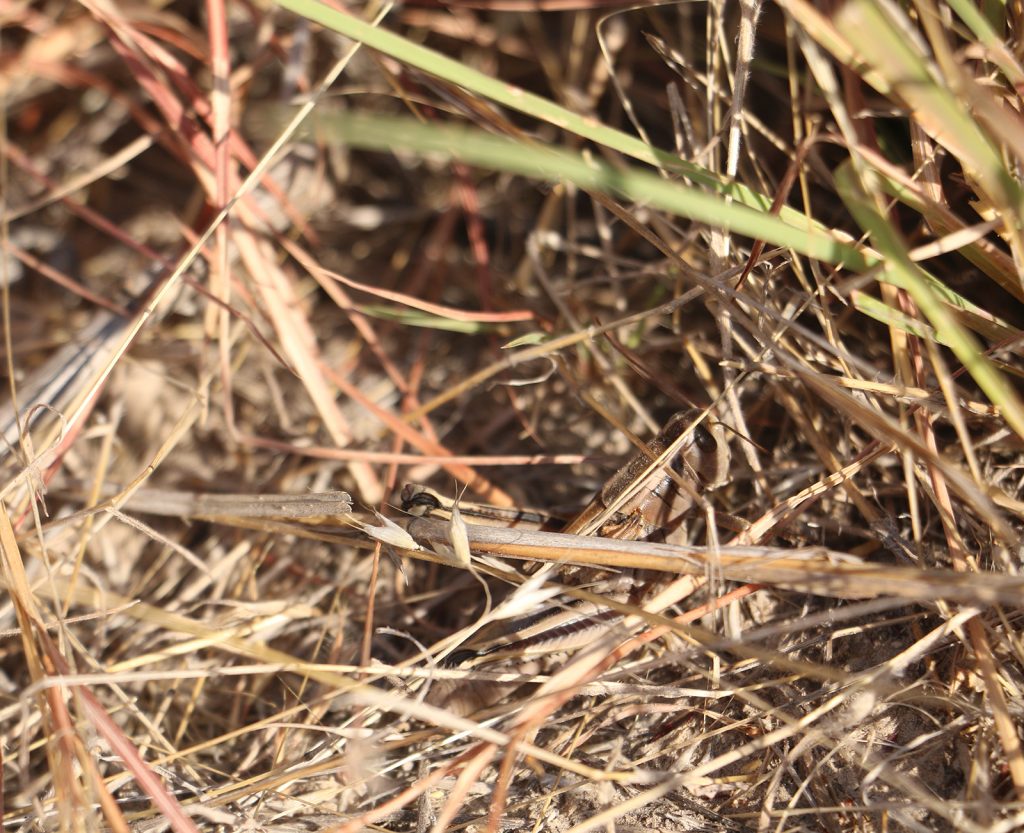
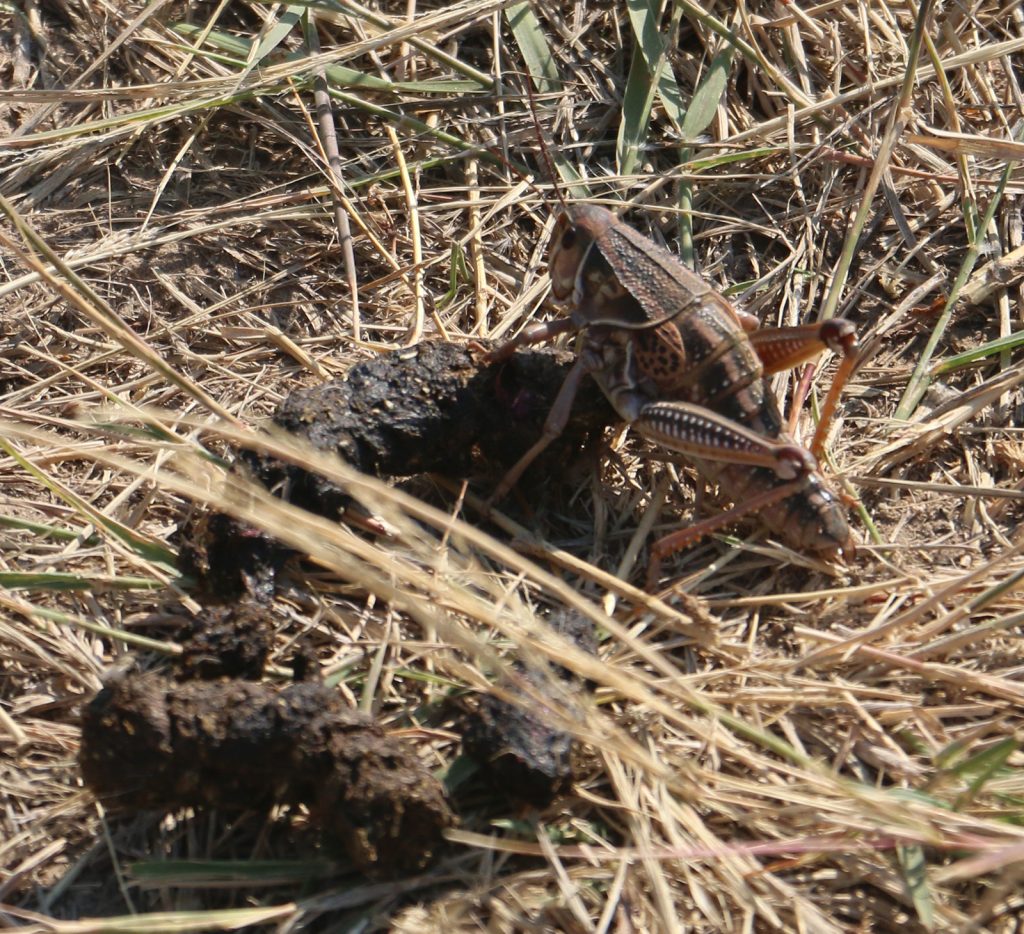
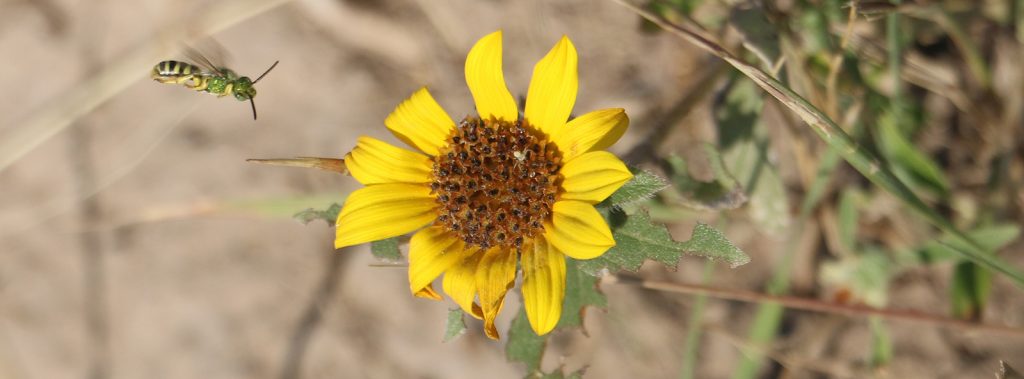
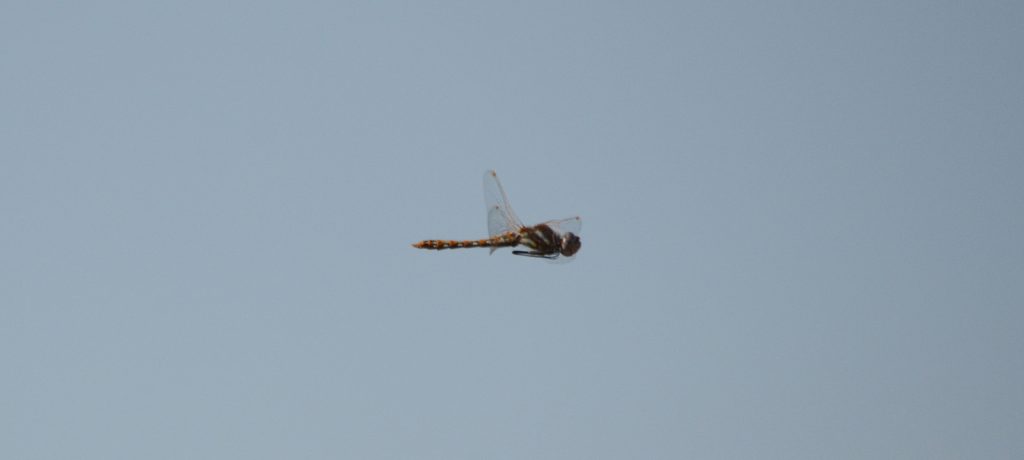
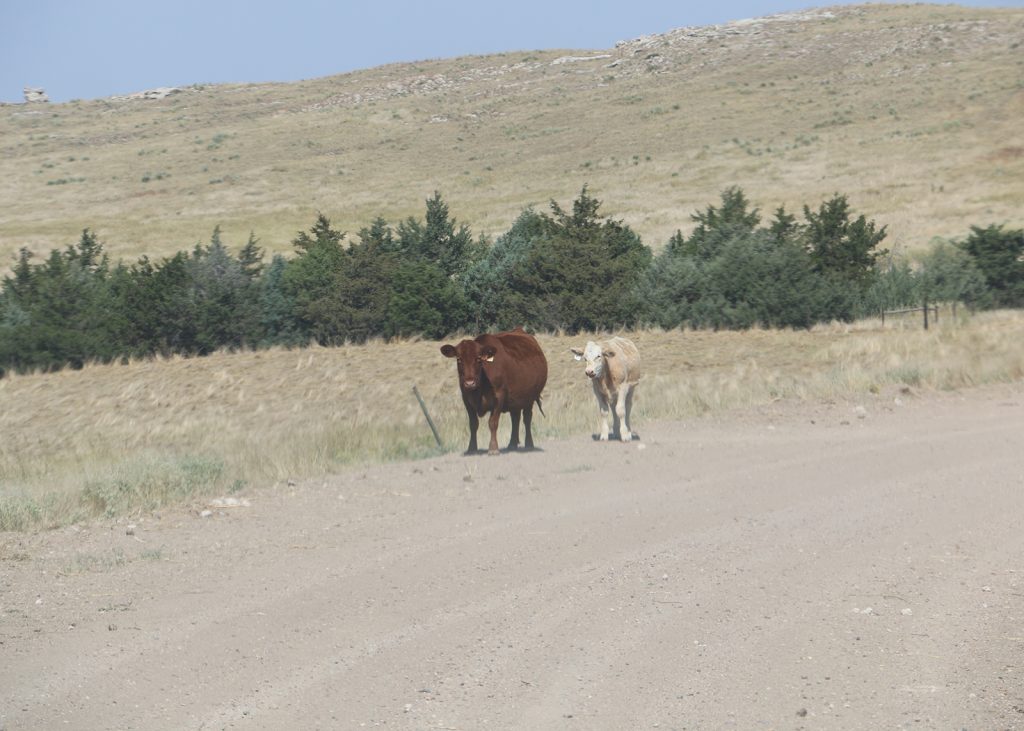
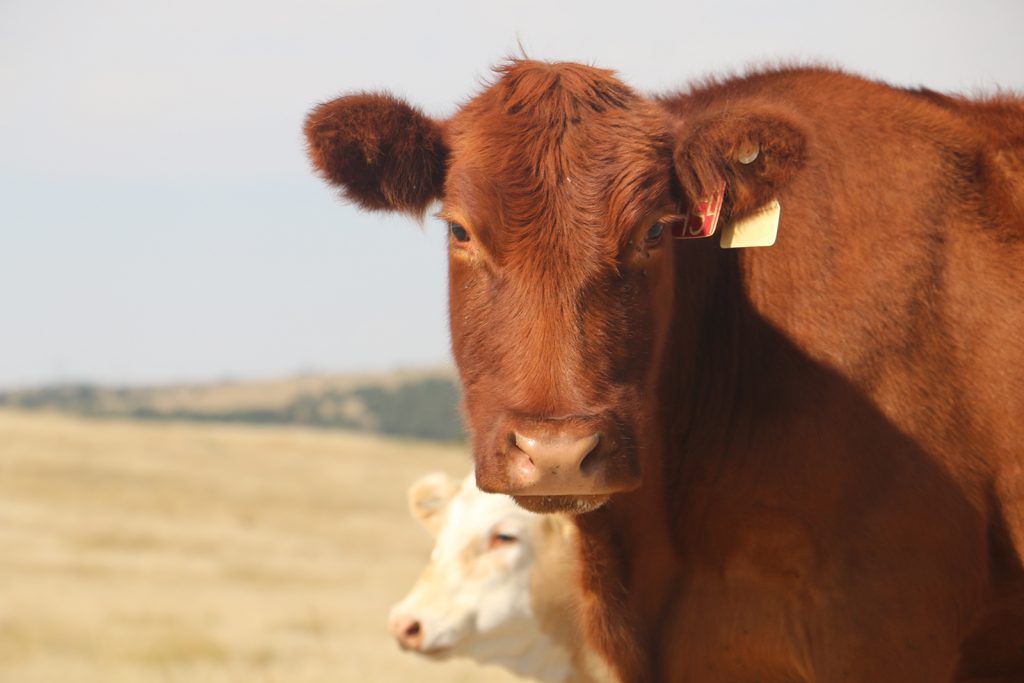
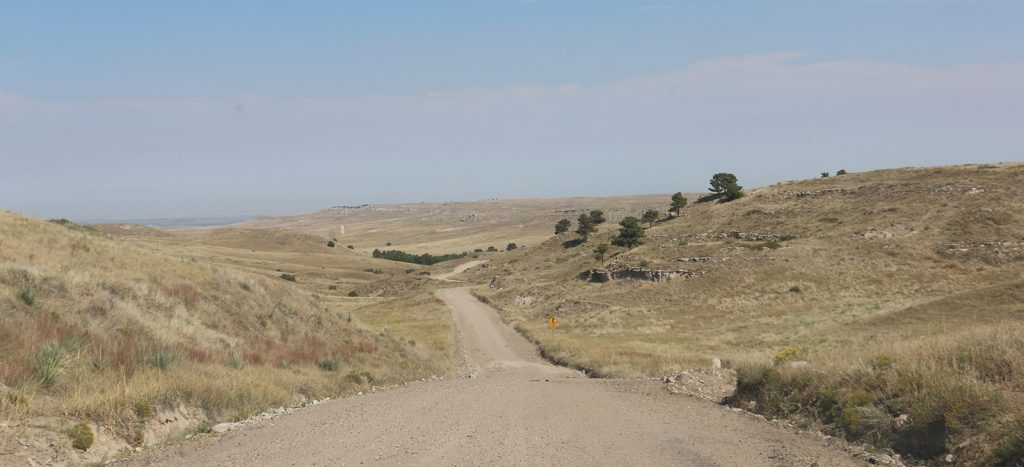
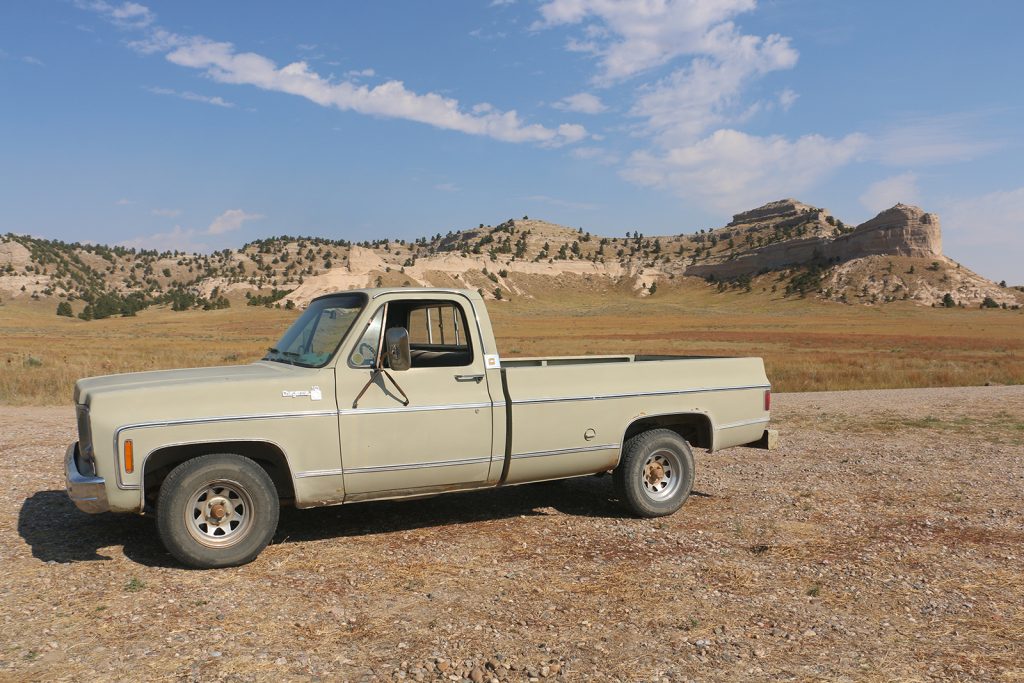
Jim Collister
Nice piece. I must admit to not being able to “see” anything but vegatation on some photos.
Irene
Those grasshoppers do a nice job of blending in.